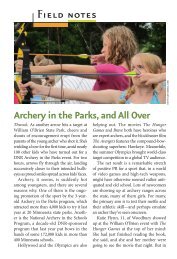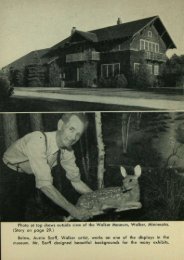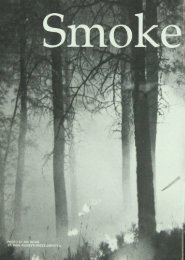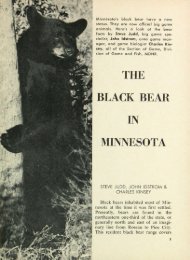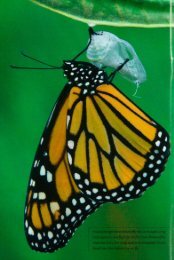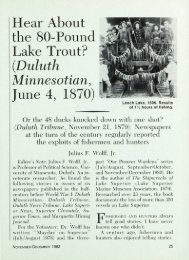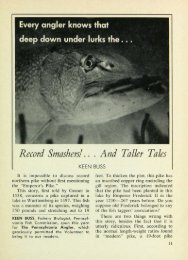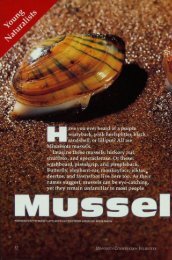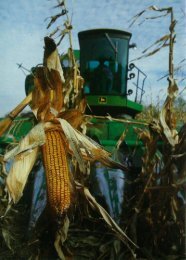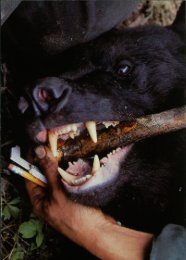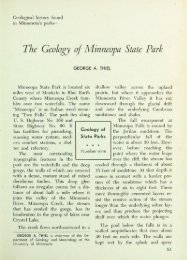218 Bell Museums Creator of Wildlife Dioramas - webapps8
218 Bell Museums Creator of Wildlife Dioramas - webapps8
218 Bell Museums Creator of Wildlife Dioramas - webapps8
Create successful ePaper yourself
Turn your PDF publications into a flip-book with our unique Google optimized e-Paper software.
<strong>Creator</strong> <strong>of</strong> <strong>Dioramas</strong><br />
Breckenridge supervised moving the<br />
Pipestone Prairie and six other large<br />
exhibits — no small task since the exhibits<br />
could not be moved as units. A<br />
herd <strong>of</strong> caribou in a bog, a beaver dam<br />
and lodge, a cattail marsh containing<br />
dozens <strong>of</strong> birds and nests had to be<br />
carefully taken apart, moved down the<br />
street, then reassembled.<br />
In the new museum, Breckenridge<br />
planned dioramas featuring<br />
wolves, snow geese, sandhill cranes,<br />
and more. To design and paint the<br />
background panoramas, Francis Lee<br />
Jaques came from New York where<br />
he had worked as an artist for the<br />
American Museum <strong>of</strong> Natural History.<br />
Later, John Jarosz, a remarkably<br />
talented taxidermist, joined the team.<br />
Together they created a series <strong>of</strong> exhibits<br />
for the museum that are still<br />
considered among the finest in the<br />
country.<br />
Minnesota Habitats. Breckenridge<br />
and Jaques wanted to design a<br />
series <strong>of</strong> exhibits featuring species,<br />
seasons, and habitats appropriate for<br />
Minnesota. Breckenridge said:<br />
"Our groups were planned as a trip<br />
through the various habitats in Minnesota.<br />
As you walked through the<br />
exhibit halls, you traveled all around<br />
the state, from the southeastern<br />
hardwoods, up along the Mississippi,<br />
out into the prairies in the west, and<br />
back through the pine and spruce<br />
woods in the north."<br />
In the new exhibits, Breckenridge<br />
and Jaques strove for biological accuracy<br />
and educational value — the<br />
dioramas were not to be glorified trophy<br />
cases. Each exhibit featured ecological<br />
stories that stimulated a visitor's<br />
curiosity. Snow geese fly at the<br />
peak <strong>of</strong> migration; sandhill cranes leap<br />
in a courtship dance; songbirds mob<br />
a great gray owl. Even the rocks, soil,<br />
and vegetation are realistic. The result:<br />
a set <strong>of</strong> exhibits <strong>of</strong> outstanding<br />
beauty, realism, and authenticity.<br />
Breckenridge also pioneered in<br />
nature films. At first, he was restricted<br />
to heavy, hand-cranked cameras.<br />
Nevertheless, he collected valuable<br />
footage. On one 1928 trip, he<br />
filmed nesting cranes, a ruffed grouse<br />
drumming, prairie chickens on their<br />
booming grounds, and the first sequences<br />
filmed <strong>of</strong> strutting sharptailed<br />
grouse.<br />
For years, his films were shown<br />
during the museum's popular Sunday<br />
afternoon programs. Later, Breckenridge<br />
produced films to accompany<br />
his Audubon Society lectures<br />
throughout the country. Topics ranged<br />
from the territorial behavior <strong>of</strong> birds<br />
to current conservation issues. His<br />
nature films were among the first to<br />
be aired on public television.<br />
40 Above: <strong>Wildlife</strong> artist Francis Lee Jaques painting background<br />
for wolf group diorama, June 1940. Right: Breckenridge filming<br />
winter wildlife at Lake 4, Cook County, March 1938.





